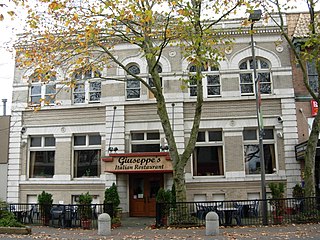
Thomas Andrews Hendricks was an American politician and lawyer from Indiana who served as the 16th governor of Indiana from 1873 to 1877 and the 21st vice president of the United States from March until his death in November 1885. Hendricks represented Indiana in the U.S. House of Representatives (1851–1855) and the U.S. Senate (1863–1869). He also represented Shelby County, Indiana, in the Indiana General Assembly (1848–1850) and as a delegate to the 1851 Indiana constitutional convention. In addition, Hendricks served as commissioner of the United States General Land Office (1855–1859). Hendricks, a popular member of the Democratic Party, was a fiscal conservative. He defended the Democratic position in the U.S. Senate during the American Civil War and Reconstruction era and voted against the Thirteenth, Fourteenth, and Fifteenth Amendments to the U.S. Constitution. He also opposed Radical Reconstruction and President Andrew Johnson's removal from office following Johnson's impeachment in the U.S. House.

Shelbyville is a city in Addison Township, Shelby County, in the U.S. state of Indiana and is the county seat. The population was 20,067 as of the 2020 census.

Shelbyville is a home rule-class city in and the county seat of Shelby County, Kentucky, United States. The population was 17,282 at the 2020 census.
Shelby Township is a township in Blue Earth County, Minnesota, United States. The population was 294 as of the 2000 census.

John Christoph Blucher Ehringhaus was an American politician who served as the 58th governor of North Carolina, serving from 1933 to 1937.
The Jeffersonville, Madison and Indianapolis Railroad (JM&I) was formed in 1866 as a merger between the Indianapolis and Madison Railroad and the Jeffersonville Railroad.

The Benevolent and Protective Order of Elks is an American fraternal order founded in 1868, originally as a social club in New York City.

The Allen County Museum is located in the city of Lima, the county seat of Allen County, Ohio, United States. Occupying a half city block, the museum campus includes the main museum building, a log house, the MacDonell House, a Shay Locomotive display, the Children's Discovery Center, genealogy and local history library, railroad archives, and the Children's Garden. The museum is accredited by the American Alliance of Museums. According to recent reports of the American Alliance of Museums Accreditation Department, less than 800 museums, out of more than 11,000 in the United States, are accredited. Standards for accreditation apply across the board to both small and large institutions.

Valentown Hall is the name of an abandoned historic shopping and community center located in Victor, New York. The structure was built in 1879 by Levi Valentine, and today it is operated as a museum on the National Register of Historic Places.

Discovery Park of America is a museum and heritage park located just outside the boundary of Union City, Tennessee. The park sits on 50 acres (20 ha) of land off of Everett Boulevard, near U.S. Route 51 and the proposed Interstate 69. It features exhibits and activities on local history, nature, military history, art and science.

The Johnson County Museum of History is a local historical museum located in Franklin, Indiana. The museum is run by the Johnson County Historical Society. The museum officially opened in 1931, under the name "Johnson County Museum." It was organized by the local Chapter of the Daughters of the American Revolution.

The B. P. O. E. Building, otherwise known as the Elks Club was originally built for the Bellingham chapter of the Benevolent and Protective Order of Elks in 1912, during the city's second major building boom. It is located within the vicinity of the old Federal Building on Cornwall Avenue, historically known as Dock Street. The Elks no longer occupy the building and it is now home to an Italian restaurant. It was listed on the National Register of Historic Places on March 26, 1992.

The Benevolent and Protective Order of Elks Lodge, also known as the Elks Civic Building, is a historic building in Montrose, Colorado, United States. It served as an Elks lodge from construction in 1927 until 1969, and has since housed a college and city offices. In 2017 it was, and in 2019 still is, the location of the city's Visitors' Center. The building is listed on the Colorado State Register of Historic Properties and the National Register of Historic Places.

Finchville is an unincorporated community within Shelby County, Kentucky, United States.

The Nevada-California-Oregon Railway Co. General Office Building, commonly known as the N.C.O. Building, is a historic site in Alturas, California, listed on the National Register of Historic Places. It was built 1917–1918 to serve as the headquarters of the Nevada-California-Oregon Railway. It has been an Elks Lodge since at least 1974.
The Improved Benevolent Protective Order of Elks of the World (IBPOEW) is an African-American fraternal order modeled on the Benevolent and Protective Order of Elks. It was established in 1897 in the United States. In the early 21st century, it has 500,000 members and 1500 lodges in the world.
Founded in 1916, the Columbia County Historical Society and CCHS Museum & Library collects, preserves, interprets, and presents the history, heritage, and culture of Columbia County, New York, and serves residents of all eighteen Columbia County towns and the city of Hudson.
The Rowan Public Library is a public library system in Rowan County, North Carolina. It was founded in 1911.














